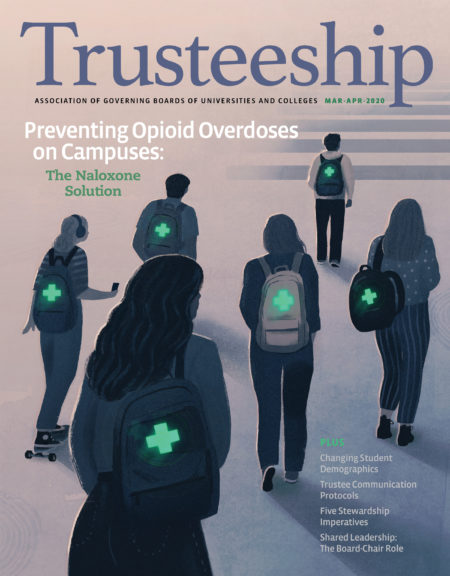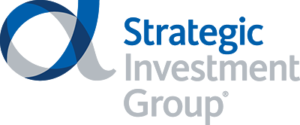
SPONSORED CONTENT
It is imperative for boards and their investment committees to remain informed about both the portfolio and best practices around endowment management given the fiduciary responsibility they have over the portfolio. Committees have been asking us more frequently about what this involves and what the investment committee should be doing to fulfill its fiduciary responsibilities when considering the endowment management model they have adopted: an internal chief investment officer (CIO), committee with the help of a consultant, chair of the committee acting as CIO, or an outsourced chief investment officer (OCIO).
As we shared in Endowment Management for Higher Education, published by AGB:
In its fiduciary role, the governing board must always retain some key, high-level endowment-management responsibilities that should be explicitly stated. Today, best practices suggest that these may include:
- Determining the structure and composition of the investment committee.
- Selecting the investment committee chair.
- Approving the endowment management-model (internal CIO, OCIO, commit-tee-led, or something else).
- Establishing the conflict-of-interest policy.
- Approving any environmental or social restrictions with which the endowment must comply.
- Establishing guidelines for any major policy issue on which the board has strong views (e.g., limits on illiquidity).
- Regularly reviewing the major decisions and performance of the investment committee.
There are two key decisions that are often recommended to the board for final approval, but where all critical work and analysis is performed by the investment committee. These include:
- Select and terminate the CIO, OCIO, or consultant.
- Approve the investment policy statement (“IPS”), which should include the strategic asset allocation, allowable asset classes, and approved ranges for each asset class.
To facilitate timely decision-making, there are other decisions that should not require approval by the board. Today, best practices suggest that the investment committee be empowered to perform the following strategic tasks:
- Recommend the endowment-management model to the board.
- Approve any temporary departures from investment policy and communicate this to the board.
- Support the CIO/OCIO/consultant and ensure he or she has sufficient resources.
- Review investment performance com-pared to appropriate benchmarks.
- Review portfolio exposures and risks.
- Review all major actions taken by the CIO/OCIO/consultant, and his or her performance.
- Review the level of endowment-related fees and expenses.
- Help source managers.
- Communicate with other constituents, including donors, board members, and other committees of the board.
- Approve the independent, third-party custodian of the endowment assets.
- Ensure adherence to all applicable laws, regulations, and policies for the institution, such as UPMIFA, etc.
A critical review of the items above reveals that these are the key decisions that will have the greatest impact on overall investment success and will be the most important determinants of total portfolio returns. The items listed are often the key components of the committee’s oversight responsibilities as outlined in the organization’s IPS. We are often reminded of AGB’s direction that boards have three key roles, as outlined in An Anatomy of Good Board Governance in Higher Education: “get the right people, focus on the right things, and work together in a respectful way” and this counsel applies to an investment committee’s work as much as it does for any committee.
To supplement the list above, we suggest that the committee should prepare a strategic agenda each year in consultation with the CIO (whether internal or external) to review the following:
1. IPS. This document is critical to the success of the investment program. All roles and responsibilities should be clearly outlined here. If drafted appropriately, the document will create clear areas of accountability for each fiduciary identified in the IPS. It is unfortunate how many times we are asked to read an IPS with the disclaimer, “This doesn’t really reflect how we do things. Please note that we do this instead…”
Within the IPS, it is crucial that close attention is paid to the objectives. We often find that committees do not spend enough time defining the objectives of the endowment’s investment program. Careful thought should be given to how success will be defined, because this will have a profound impact not only on the asset allocation, but also on the various parties’ ability to stick with a particular investment plan in volatile market environments.
2. Reaffirmation of strategic asset allocation. The group should answer the question: has anything changed in our situation that would lead to a change in the institution’s ability to take risk? To supplement this exercise, we recommend that the committee develop a dashboard to review key financial variables for the institution. This may include things like: application level trends, yield level trends, tuition discounting trends, the composition of the class by in-state or out of state (for public institutions), debt level trends, operating cash trends (or any other relevant financial resources), trends in contributions into the endowment each year (not grants, but actual cash contributions to the portfolio), and notes about any significant capital projects that are on the horizon.
This has a secondary benefit in that it serves to inform any new committee members of why the institution has chosen the level of risk and long-term asset allocation that it has in place. We find that new committee members often do not embrace the asset allocation as a decision for which they are accountable, and this asset allocation review essentially re-underwrites the decision, pulling new members into the group accountable for this key decision. This point is a very important one in any market environment and seems especially important after a period of higher than expected equity returns. Even investment committees experience FOMO (fear of missing out) and have remorse that they didn’t have a bit higher equity risk (private and public) after a time of higher than average equity returns.
Not surprisingly, given the recent strong performance and low volatility of most asset markets, investors feel comfortable and many are contemplating taking on more risk. We have increasingly been hearing about plans by investment committees to boost the risk of their portfolios.
For some institutions, the appetite for more risk is grounded in stronger financial positions. We understand that it is natural to feel able to take on more risk from a position of strength. If the improvement in financial circumstances is sustainable over the long term and not merely a reflection of temporarily buoyant market returns, a reconsideration of the investment policy that contemplates more risk may be justified.
However, we are concerned by stories from colleagues around the higher education community about planned increased allocations to U.S. equities and private equities at a time when both have achieved outsized returns. We understand that investment committees would not categorize these actions as market timing, even when it seems that some are reacting to recent market gains. For those on investment committees or leading institutions in today’s environment, we would caution against taking on a great deal more risk in your investment portfolios.
3. Investment managers. Most committees do not have direct accountability for hiring and firing the investment managers utilized, yet the committee should still ensure that it has sufficient understanding of the managers included in the portfolio so that it can determine whether the manager lineup is consistent with the objectives and restrictions in the IPS. A CIO, OCIO, or a consultant can help synthesize the relevant information to make sure it best supports the committee’s ability to fulfill this important monitoring responsibility. The committee should also be reviewing manager performance in the context of the manager’s style. There is a great deal of confusion around the appropriate level of engagement on manager over-sight and we have found that committees often either seek more involvement in the manager selection process than is ideal, or they step back a bit too far, feeling that their CIO has this covered.
4. Applicable laws and regulations. It is important to understand all applicable regulations, laws, and agreements your board is subject to, including your state’s UPMIFA requirements and any donor-imposed restrictions. If you serve a public university, reviewing your state’s public records laws, and addressing their implications, would be important. We find that this can have serious implications to the managers you may utilize. Some alternatives managers have chosen not to allow public institutions to invest in their funds given the potential for public disclosure of sensitive information. Consider having an attorney come to your board or committee meeting to provide a synopsis of these requirements once each year and any actions the committee is advised to take in response to them.
5. Operational due diligence. If you utilize an outside advisor, consultant, or OCIO, it is a best practice to visit that firm once a year for a thorough review of its practices. If you have an internal investment office, a similar process should also be followed, adjusted as necessary. This could include a review of the laws, regulations, and oversight the firm is subject to, as well as the firm’s staffing, processes, internal controls, and conflicts. As an example, if the firm is a registered investment advisor and is regulated by the SEC, you could ask to review the results of its most recent SEC exam. Additionally, you can request information about its procedures, operational risks, conflicts of interest policy, Code of Conduct, compliance program, cybersecurity and business continuity practices, etc. Please note that many of the relevant documents are often quite sensitive and cannot be distributed, yet many firms will let you review confidential documents in person during an on-site visit.
6. Industry trends. There is an interest in learning about best practices from peer organizations. We would suggest that the annual AGB events would fulfill this desire, so you may wish to consider sending at least one member from your team to these events. Many committees also take some committee time to review the NACUBO study and the findings from this study in case there are relevant actions for consideration by your committee.
7. Full board review. Finally, we recommend at least an annual review of the investment program with the full board to help them fulfill their fiduciary responsibilities. Ensure open and regular communication with other key members of the institution—especially the finance committee and the full board. Important stakeholders should be kept abreast of the investment committee’s work, results, and any major changes that are taking place. A concise executive summary (two pages should suffice) that contains long-term endowment performance against relevant benchmarks, actual asset allocation vs. the policy, and key decisions recently made should be included in every board meeting package. We also recommend regular in-person updates for the full board, which tends to instill greater levels of trust and confidence in the team that manages the endowment. Nothing replaces face-to-face conversations and the opportunity for board members to ask questions.
Nicole W. Kraus, CFA, is a managing director, global head of client development at the Strategic Investment Group.
Kenneth I. Grossfield, CFA, is the chief administrative officer and general counsel at the Strategic Investment Group.


